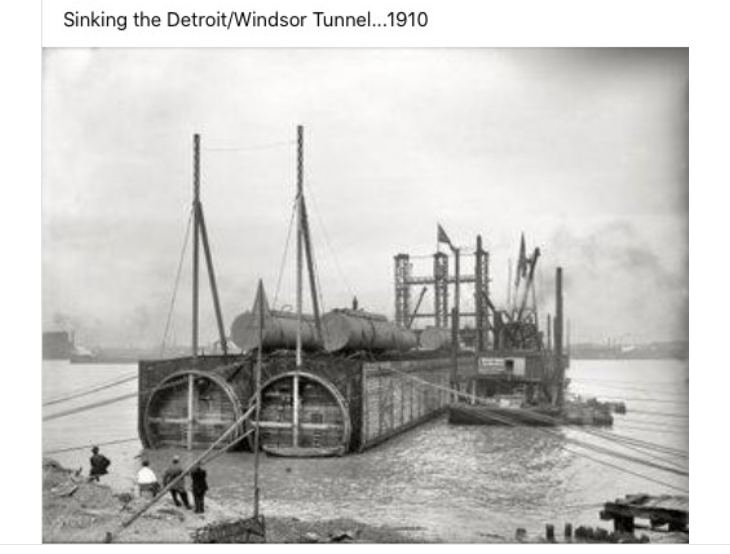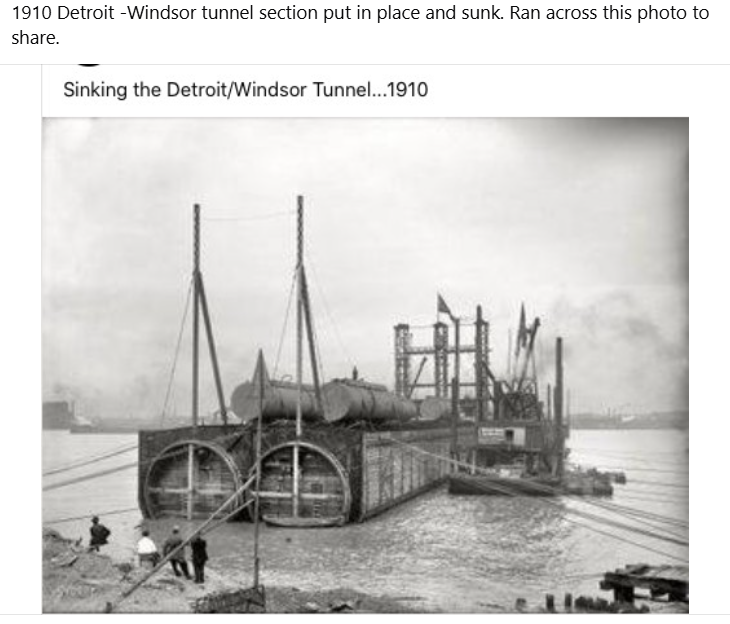The Detroit-Windsor Tunnel, a vital link between the United States and Canada, was a significant engineering achievement that took over 25 years to bring to fruition. This tunnel, which connects Detroit, Michigan, with Windsor, Ontario, under the Detroit River, has become one of the most important international crossings in North America. However, its development began with a dream of improving cross-border travel and commerce, a vision that would be realized through ingenuity and determination.
Early Beginnings: A Dream for Efficient Cross-Border Travel
In the early 20th century, Detroit was experiencing rapid growth due to the booming automotive industry, which led to a surge in cross-border trade and movement between the United States and Canada. At the time, the primary crossing point was the Detroit-Windsor ferry, which, while functional, was often slow and inefficient. The idea of a tunnel connecting the two cities was proposed as a way to streamline this crucial transportation route.
The first formal proposal for the tunnel came in 1906, but the process of turning this idea into reality was not immediate. The tunnel’s concept needed the approval of both the U.S. and Canadian governments, as well as significant financial backing. The crossing would also require addressing a number of engineering challenges, including the depth of the Detroit River, which averages about 15 feet but can be much deeper in certain areas.

Engineering Challenges and Planning
Designing the tunnel was no small feat. Engineers had to overcome the challenge of constructing a tunnel under the river’s unpredictable flow and the tough bedrock beneath the riverbed. The construction methods that would eventually be used for the tunnel were innovative for the time, as the plan called for a “shield” method—essentially a large steel cylinder—designed to tunnel through the earth and riverbed while keeping the structure safe from flooding and shifting materials.
Another major hurdle was raising the necessary funds. The original plan, presented by a group of Detroit business leaders led by Joseph B. R. “Joe” C. Dyer, was initially met with skepticism, but they eventually secured financing through a mix of private investment and support from both the city of Detroit and Windsor. The investors formed the Detroit-Windsor Tunnel Company to oversee the project.
Construction and Completion
Construction officially began in 1928, although the project faced delays due to labor disputes, financial difficulties, and the complexities of tunneling under the Detroit River. The process was slow, but engineers eventually succeeded in boring through the riverbed using the shield method, which allowed them to create a secure passage that would resist the flow of water.
By 1930, the tunnel was complete and ready for use. It was a feat of engineering, with the tunnel measuring 5,160 feet long, 20 feet wide, and running about 30 feet beneath the Detroit River. The tunnel was designed for automobile traffic and became a critical conduit for both passengers and freight between Detroit and Windsor.
The Opening: A Historic Moment
On November 3, 1930, the Detroit-Windsor Tunnel was officially opened to traffic. At the time, it was the first vehicular tunnel in North America to be constructed under a body of water. The opening of the tunnel was a historic moment for both cities, ushering in a new era of economic and cultural exchange. It not only facilitated trade between the two countries but also helped strengthen the bonds between Detroit and Windsor, making cross-border travel more convenient for families, workers, and businesses alike.
Legacy of the Detroit-Windsor Tunnel
The Detroit-Windsor Tunnel has stood as a testament to human ingenuity and determination, providing continuous service for nearly a century. While the tunnel was initially designed to accommodate only cars, it has since undergone several renovations and upgrades to keep up with the growing demand. Today, it handles more than 3 million vehicles annually, making it one of the busiest border crossings in North America.
The success of the tunnel has also served as an inspiration for other infrastructure projects around the world, illustrating how visionary ideas can overcome even the toughest engineering challenges. The Detroit-Windsor Tunnel is not just a crossing—it is a symbol of cooperation, engineering expertise, and the ongoing importance of connecting communities on both sides of the border.


